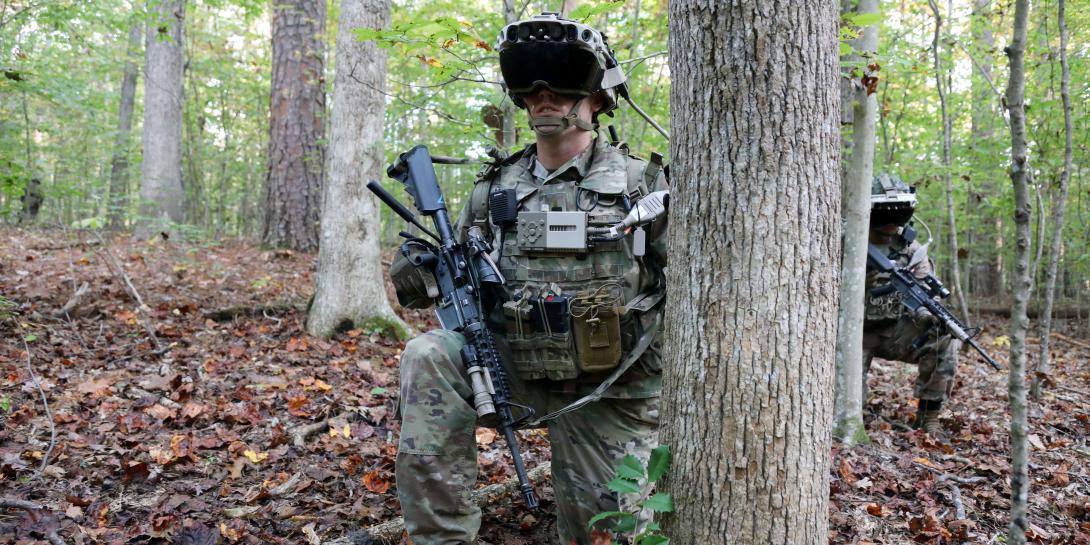Shift from War on Terror to Great Power Competition Moves Biometric Goals, Too
On the battlefield of the future, biometric data and the identity intelligence it provides offers new advantages.
As the strategic focus of the U.S. military shifts away from the counterinsurgency operations of the war on terror and toward great power competition, so the focus of its biometrics programs is changing as well, Defense Department officials told AFCEA’s 2021 Federal Identity Forum and Expo Tuesday.
On the battlefield of the future, where U.S. forces confront near-peer adversaries and not the rag-tag irregular forces it fought in Iraq and Afghanistan, biometric data and the identity intelligence it provides offers new advantages, explained Bob Cosgrove, a senior analyst supporting the U.S. Army Military Police School at Fort Leonard Wood, Missouri, and the Defense Forensics and Biometrics Agency (DFBA) in Washington, D.C.
Cosgrove is authoring a white paper for the DFBA titled “U.S. Army biometrics and multidomain operations in 2028,” which aims, he said, to outline future uses of biometric technology. “It describes how future Army forces can incorporate biometrics into multidomain operations [or MDO] to enable their ability to counter and defeat a near peer adversary during periods of competition and armed conflict,” he said.
While conducting research for the white paper, “We determined that biometrics’ primary role in MDO was its contributions to Army forces’ ability to gain and maintain information advantage over our adversaries,” Cosgrove said.
That advantage stemmed from the ability of biometric-enabled identity intelligence to block off or countermand several strategies used by near-peer competitors in great power conflict:
- Threat anonymity: The use of “anonymous” or unidentified military personnel (like the “little green men” used by the Russian military in Ukraine 2013-14.)
- Threat impunity: When anonymous or irregular forces hide their true identity both individually and collectively, to avoid accountability for war crimes on the battlefield and other violations of international law.
- Threat collusion: When an adversary works with or through irregular or proxy forces, in order to conceal, or at least create plausible deniability for, its actions.
William Graves, chief engineer for the DoD’s Biometric Program Office, added that near-peer conflicts would likely be on a different scale to the counterinsurgency and counterterrorism operations of the last two decades, driven by the growing prevalence, especially in Asia, of vast megacities with tens of millions of inhabitants.
“The future of modern conflict will be urban, so we need to develop technologies to support the warfighter in this emerging environment,” Graves noted.
More than half of the population of these sprawling, teeming conurbations will be under 18, Graves added, which “will cause a huge strain on the cities as they grow. Ethnic and religious tensions will be magnified, because everybody's in close proximity. And then obviously, the impacts of war on infrastructure that's already strained, could be completely devastating, if war was actually to happen.”
The numbers meant that even a tiny minority of city dwellers constituted a huge force, he said. “Let's say you're trying to do combat operations in Cairo, and 99 percent of the population is on your side and is supporting you. But 1 percent out of 20 million is still 200,000 people that could be potential adversaries.”
These numbers drive a need for speed and accuracy in biometric enrollment, Graves said. “In the future, speed will be extremely important. You don't want to have manual interventions … and people [erroneously entering, or] fat-fingering biographical data.” To deal with this issue, new enrollment equipment would be equipped to decipher the machine-readable zones on most modern identity documents, so that the biographical data associated with the biometric being collected could be automatically recorded to reduce the time taken and the probability of error.
The need to operate in crowded, fast moving urban environments was also driving the development of biometric identity applications for augmented reality, or AR, explained Graves.
The Army is developing AR or mixed-reality headsets based on Microsoft’s HoloLens technology. The devices, using what is called the Integrated Visual Augmentation System (IVAS), will allow soldiers to see through smoke and in other adverse conditions and to have data about objects in their field of view projected around the object.
“Let's say you're in a city, you're in a crowded area, and you've got your IVAS augmented reality goggles on. You could walk through the crowd. And as you're walking through the crowd, it's checking the faces (against a facial recognition watchlist) … almost in real time. So … if somebody in the crowd popped on the watchlist, it would show up in your goggles, as probably a red box around that individual’s face,” explained Graves. The hit could also alert other personnel, including perhaps snatch teams, nearby.
Graves said the technology was currently being tested and should shortly be available through the NetWarrior app store.



Comments